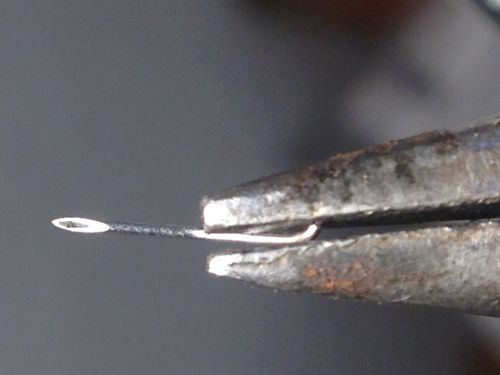Editor's note: A version of this story ran in the March issue of BRAIN.
OAKLAND, Calif. (BRAIN) — With a background as an EMT, Greg Archer knew immediately.
The owner and mechanic of Archer Bicycle was changing a flat in November, checking the inside of the tire casing for sharp objects.
"I've run my fingers along lots of tires," said Archer, 55, who has owned his shop for 5½ years. "And you'll feel a piece of wire or a staple or something that's gone through and get a drag of that. You can feel the sharp edge but it doesn't actually stab you."
But a broken hypodermic needle will. And it stabbed Archer on his left middle finger.
"A hypodermic needle is tapered and designed to get through skin quickly and easily. And it was that sharp stab that said, 'This isn't good.' Pulling (the needle) out of the tire was the confirmation."
Archer's experience — which led to an immediate visit to urgent care with tests and medication and so far a clean bill of health — is a cautionary tale for other mechanics and cyclists who make routine flat repairs in urban areas.
Archer recommends inspecting a tire visually and by feel, using a folded rag to slowly sweep the inside, while carefully inspecting the outside for objects and punctures.
"This is not something any bike mechanic expects at all in the back of their mind that they need to worry about," said Archer, who has worked in the bike industry since the mid-1990s. "Or anyone who's a recreational rider who gets a flat tire. I've been giving this same speech to my customers. When you change a flat tire, here's the new protocol."
If fixing a flat out on the road, Archer recommends protecting your hand with a glove when feeling for debris.
Five days after the incident, Archer was changing another flat for a different customer when he safely removed another hypodermic needle. His shop is located in downtown Oakland, which he said has a large homeless population.
"Abandoned needles are not an uncommon thing on the roads and sidewalks in the Bay Area," Archer said.
His prognosis is good. He tested negative for HIV and hepatitis after the initial six-week period. In three months, he'll be tested a final time. "I will say this gave me some sleepless nights," he said.
While Archer's story is unusual, he wouldn't be surprised if it's happened to someone else.
"I'm the only mechanic that I know of that's had this happen, but that doesn't mean that someone before didn't know it was a hypodermic needle or the ramifications of not getting treated," he said. "The thing that screams hypodermic is, if you look at the sharp point, you can see there's a little oval of darkness. That shows it's a hollow needle. Hollow needles are all hypodermic. That says, 'OK, you're screwed.'"




